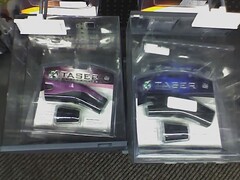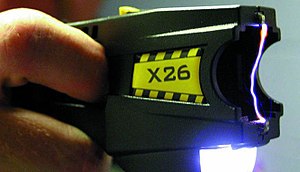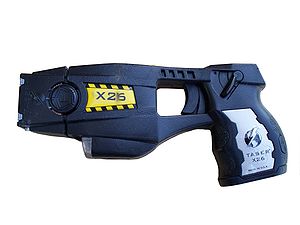EXCERPT FROM CHAIN LYNX
“T-bone don’t matter none. He in for assault. He a gang banger. No one believe nothing he’d say. He want to tell? Go ahead. He just trying to trade me in for a free walk, man.” Hector rested his eyes on his knees.
“You told T-bone your story.”
Hector looked up at Axel and back down with a scornful huff.
“And now T-bone is dead,” Axel said.
Hector all but threw his body out of his chair. He moved back in the tiny interrogation room, away from Axel, to stand in the corner. He was cornered.
“What you mean T-bone dead?”
Axel said nothing.
"He was alive this morning when I got moved.”
Axel gave a slight nod.
Hector stalked back to his chair, sat down, and leaned
forward, tightly wound, focused. “T-bone dead?”
“This is bigger than you could ever imagine.” Axel’s voice was quiet. Eerily free of emotion. “You are smaller than you could ever imagine. You, Hector, are a bug under someone’s shoe, and you are about to get squashed. I want to know why.”
“What you mean T-bone dead?”
Axel said nothing.
"He was alive this morning when I got moved.”
Axel gave a slight nod.
Hector stalked back to his chair, sat down, and leaned
forward, tightly wound, focused. “T-bone dead?”
“This is bigger than you could ever imagine.” Axel’s voice was quiet. Eerily free of emotion. “You are smaller than you could ever imagine. You, Hector, are a bug under someone’s shoe, and you are about to get squashed. I want to know why.”
| (Photo credit: Wikipedia) |
While intelligence gathering happens prior to a crime, an investigation happens as a reaction to a crime.
It is important for a writer to understand the different roles that are played by investigative professionals.
A forensic scientist processes evidence. Unlike what we see on TV, forensic scientists usually DO NOT conduct interviews or interrogations. Typically interviews and interrogation are considered police science rather than forensic science.
An interview is conducted with a witness and an interrogation is conducted with a suspect.
*Police interviews happen anywhere - on the street or in the station.
*It is important to note that people can reply or not.
*In an interrogation, suspects have the right to protect themselves from self-incrimination.
*Witnesses have the choice whether to cooperate or not.
*Even though witnesses can refuse to talk, they can be compelled to disclose their information in front of a
grand jury and other court hearings. If an investigator is talking to someone who is refusing information, they
can be threatened with a subpoena.
As a writer, you'll want to consider:
*Does the investigator have jurisdiction?
Lee Loftland's blog about which agencies conduct which kinds of investigations
*What if several agencies can claim jurisdiction? Typically the location with the most significant crime
and the best case will take the lead. This can cause problems and might help with your plot twists.
| (Photo credit: Wikipedia) |
Investigations begin once it has been determined that a crime has taken place by one of the following:
*Police*Prosecuters Office
*Grand Jury
Investigations can be broken down into three types:
1. Administrative - These are fact finding inquiries within an agency or business*Professional Misconduct
*Safety Violations
*Employee background checks
| (Photo credit: Wikipedia) |
*Discrimination
Video Quick Study - Investigators' Reports (4:21 Industry Investigator)
2. Criminal Investigation - conducted by an agency
3. Private Investigation - Professionals hired from
outside of agencies to counter what the agencies
produce for evidence
Once an agency decides that a criminal act has taken place two things must occur:
1 - Find the suspect2 - Connect the suspect to the victim and the crime. This includes forensics, interrogation, and interviews
| (Photo credit: Wikipedia) |
Study Links to Related Blog Posts :
Fingerprints
Footwear
Blood Spatter
CSI Light
To reach the goal of arrest and conviction, investigators use:
* Search Warrants
* Arrest Warrants
* Forensic science applications
* Interviews
Study Link: How a Police Sketch Artist Works
* Interrogations
Study Link: Body Language of Liars
An interviewer will ask the same questions that your readers want to unravel as they read your story. Just remember Kiplings "Six Honest Men." Who? What? Where? When? Why? and How?
Some things for a writer to consider about their witness:
* What was the motive for coming forward? |
| At the Writers' Police Academy. I confess! |
* What is their emotional state?
* What was their physical state?
* Were they injured? In shock?
* Were they under the influence of drugs or
alcohol?
* Are they very old, or known to have impaired
memory?
* Are they very young?
Video of a child being interrogated. (8:00)
* Does the witness have limited intelligence.
* How long ago did the crime happen?
* Are the witnesses afraid to offer their
information? - Perhaps your witness is afraid of
the police
because of something that has happened in the past. (Blog link showing this concept in action),
or they are afraid of what might happen to themselves or their family and property if they step-forward
with information.
As a writer, if you have a character who is a reluctant witness, you might choose for them to use
an anonymous tip line to get the information to the investigators.
* Perhaps your witness just doesn't want to get involved - they think that it would take time away from work
or they would have to go to trial etc.
The investigator will use standardized forms to document the information. These may include:
* Witness Investigation Reports* Missing, Damaged, or Stolen Property Reports
The Interview and/or Interrogation
Psychological studies have been conducted to try to get the optimal amount of information from a witness. To this end police might choose different locations for their interview. The police may walk the witness through the crime scene. They might conduct the interview at the home. Or possibly bring them in for formal interviewing at the police station.Video Quick Study
First Jodi Arias Interrogation go to mark 3:00 to see her commenting on the temperature and watch the friendly, helpful tone of the investigator.
Training an Investigator (21:06) Talks about all of the things that impact and develop in an interview or interrogation (this focuses on child interviews) very interesting what technology has been developed for training purposes and beyond.
A writer must decide how this is documented either on camera or just voice recorded. Typically the investigator will put the recording device on the table in front of the witness. Being voice recorded is by consent-only in most states. A video tape, however, does not need to be disclosed if it is visual only. Often it is NOT disclosed that video is being taken because this has proven to impede the interview. Perhaps you want the witness to have this added intimidation factor? Perhaps you choose not to include video and something important is missed and the suspect is set free?
Sometimes a witness interview changes into an interrogation. If this happens, the subject will need to be apprised of their rights to not implicate themselves in a crime. Custodial Interrogations - the suspect is arrested then interrogated this is done AFTER their Miranda Rights are read to them.
*Typically only one person conducts the interview or interrogation.
*Forensic scientists DO NOT conduct interviews or interrogations.
*Investigators are trained to use a soft, normal tone and have a friendly demeanor.
*Typically at the beginning of an interrogation, time is spent just getting to know the person, figuring out the
subject's capacity intellectually, and psychologically - how competent are they?
VIDEO QUICK STUDY
Effective Interrogation Prt 1 (14:53) Includes body language
Effective Interrogation Prt 2 (14:52) Minimization technique,
(9:00 mark) aggressive techniques that do not work, denial interruption
Effective Interrogation Prt 3 (13:02) move to 3:00 mark.
See how this article influenced my plot lines in my novella MINE and my novel CHAOS IS COME AGAIN.







































